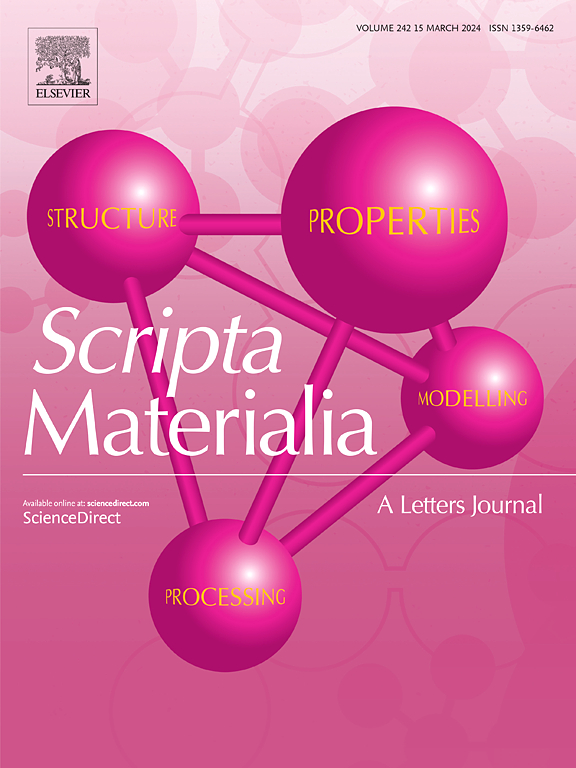揭示bcc -高温合金的变形机理
IF 5.3
2区 材料科学
Q2 MATERIALS SCIENCE, MULTIDISCIPLINARY
引用次数: 0
摘要
体心立方(bcc)高温合金是一种由体心立方基体组成的两相组织,由有序相强化而成,是一种很有前途的高温材料。由于高熔点和优异的机械强度,这种合金具有显著的优势,特别是在铁和耐火材料为基础的系统中。然而,它们经常面临一些严峻的挑战,包括有限的延展性和韧性、相不稳定性或环境脆弱性。开发这些合金需要从设计到性能评估的综合方法,以及对不同尺度下主要阶段的变形和强化机制的深入了解。这篇观点文章阐述了bcc-高温合金的变形机制,特别关注沉淀强化和位错相互作用,并提出了未来的研究方向。关键方面,如机制之间的转变,反相边界能的作用,以及化学复杂性的影响,特别是在先进的难熔合金中,仍然是一个悬而未决的问题。本文章由计算机程序翻译,如有差异,请以英文原文为准。
Unveiling the deformation mechanisms of BCC-superalloys
Body centered cubic (bcc)-superalloys – exploiting a two-phase microstructure composed of bcc matrix strengthened by coherent ordered precipitates – are emerging as a promising class of materials for high-temperature applications. Such alloys offer significant advantages especially in iron- and refractory-based systems, due to high melting points and superior mechanical strength. However, they often face critical challenges including limited ductility and toughness, phase instability or environmental vulnerability. Developing these alloys requires an integrated approach, from design to property assessment, and an in-depth understanding of deformation and strengthening mechanisms operating in the main phases across different scales.
This viewpoint article addresses the reported deformation mechanisms in bcc-superalloys with a particular focus on precipitation strengthening and dislocation interactions, and it proposes future research directions. Key aspects such as the transition between mechanisms, the role of the antiphase boundary energy, and the effect of chemical complexity especially in advanced refractory alloys remain open questions.
求助全文
通过发布文献求助,成功后即可免费获取论文全文。
去求助
来源期刊

Scripta Materialia
工程技术-材料科学:综合
CiteScore
11.40
自引率
5.00%
发文量
581
审稿时长
34 days
期刊介绍:
Scripta Materialia is a LETTERS journal of Acta Materialia, providing a forum for the rapid publication of short communications on the relationship between the structure and the properties of inorganic materials. The emphasis is on originality rather than incremental research. Short reports on the development of materials with novel or substantially improved properties are also welcomed. Emphasis is on either the functional or mechanical behavior of metals, ceramics and semiconductors at all length scales.
 求助内容:
求助内容: 应助结果提醒方式:
应助结果提醒方式:


